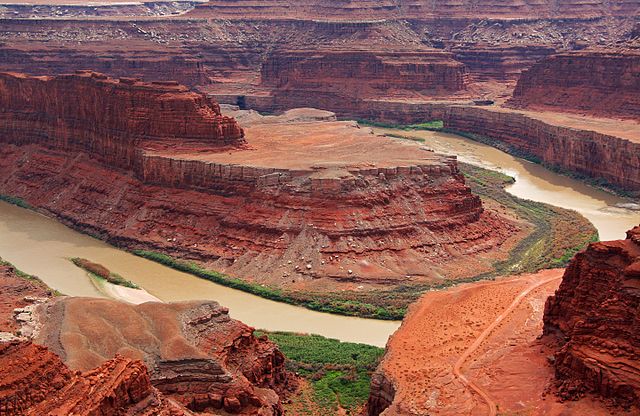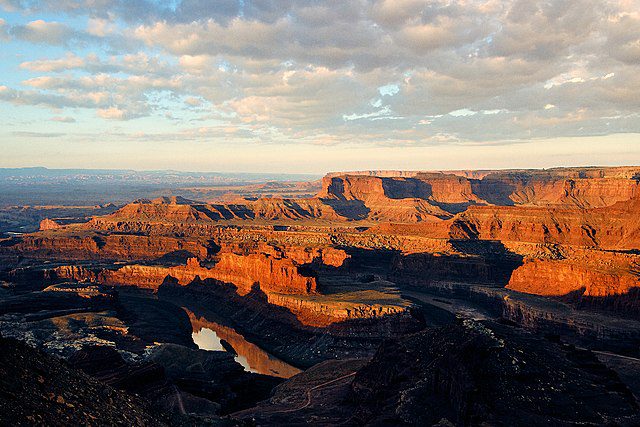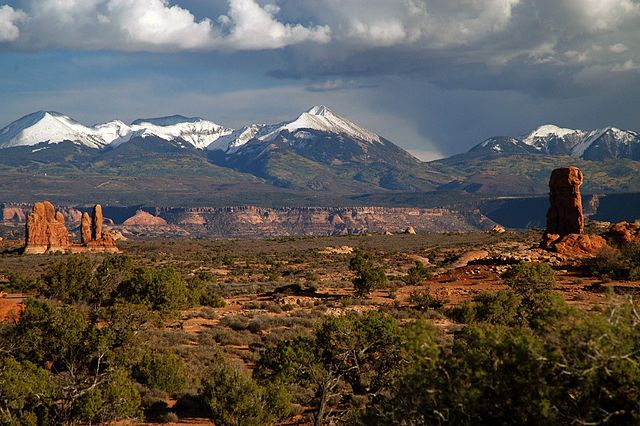
(Wikimedia Commons public domain photograph)
A new, short video — accessible to you at no charge — went up this evening, Saturday evening, on the website of the Interpreter Foundation. I hope that you’re watching these, and that you’re sharing them with family members, friends, and anybody else who might be interested in what they have to say or who might benefit from seeing them:
Witnesses of the Book of Mormon — Insights Episode 31: John Whitmer and the Plates
John Whitmer was a practical, level-headed man. He was also one of the Eight Witnesses. And yet he eventually left the church along with the rest of his family. What did he actually say about his experience with the plates?
This is the thirty-first in a series compiled from the many interviews conducted during the course of the Witnesses film project. This series of mini-films is being released each Saturday at 7 PM MDT. These additional resources are hosted by Camrey Bagley Fox, who played Emma Smith in Witnesses, as she introduces and visits with a variety of experts. These individuals answer questions or address accusations against the witnesses, also helping viewers understand the context of the times in which the witnesses lived. This week we feature Daniel C. Peterson, President of the Interpreter Foundation and Executive Producer of Witnesses. For more information, go to https://witnessesofthebookofmormon.org/ or watch the documentary movie Undaunted.
Short clips from this episode are also available on TikTok and Instagram.
Be sure to subscribe to our YouTube channel at https://youtube.interpreterfoundation.org/ and our other social media channels on Facebook, Twitter, Instagram, and TikTok.

One of the curious aspects of my rather curious life is the fact that I’ve visited the original Moab (in the Hashemite Kingdom of Jordan) much more often than I’ve visited the Moab — twice, I think — in my adopted home state of Utah. But, for various reasons, we’re here now, for at least a short time, for relaxation and just a bit of reconnaissance. With a friend and her two young daughters.
Today, we drove out to Dead Horse Point State Park.
I realized quite a few years ago now (and somewhat to my surprise) that I’m really a Westerner. That was made clear to me during a couple of extended visits to the American East. One of them involved, among other things, a drive from Washington DC to New York City (Manhattan) and back. The other involved several speaking engagements and a conference scattered across Virginia over the course of roughly two weeks. I felt hemmed in by trees on either side of the road, by being able to see for a distance only on such occasions as crossing a bridge over a river. I realized that I really like the vast silent expanses of the American West, and that I missed them. Which is odd since, growing up, I had always disliked the frequent drives since earliest childhood between my home in southern California and my relatives and other destinations in Utah. I had imagined myself living, instead, somewhere near the East Coast, with its greenery (to say nothing of its history and culture).
Now, though, I understand that I’m a child of the West. That western landscapes speak, as it were, to my soul. And that I even (sort of) like the stretch of I-15 between Victorville, California, and Bunkerville, Nevada, or the mouth of the Virgin River Gorge. It makes me think of a prominent Ivy League dean, a Latter-day Saint, whose offices I once visited many years back. His entire academic career to that point, from student days through professorship and deanship, had been at that same eminent university. And every photograph in his complex of offices represented the landscape around St. George, Utah. I understood it.
Anyway, if there is any landscape more vast than the one that can be seen from Dead Horse Point, I can’t think of it. And it’s a land of contrasts: The weather was crisp and crystal clear and beautiful today, and behind the Colorado and the deep red mesas stood the snow-clad La Sal Mountains.
Incidentally, the Utah State visitor center at Dead Horse Point State Park offers two contradictory explanations for the name of the place. They’re located at two different places in the building. Perhaps there’s even a third but, if so, I didn’t see it. According to one, the name comes from an incident when local ranchers were hunting wild horses. They chased a herd of horses to what is now Dead Horse Point. Cornered, terrified, and maddened by the sight and smell of water two thousand feet below, the horses leapt to their deaths. According to the other, early ranchers corralled a large number of wild horses on the point. Since it was bounded on three sides by sheer cliffs, they were only obliged to build ninety feet of fence on the fourth side in order to restrain the horses. Then they came into the corral to remove the horses that they wanted, leaving the others to die of thirst within the enclosure. I confess that this second explanation doesn’t make complete sense to me; I don’t quite see what the point would be of leaving a bunch of decaying horse carcasses there in your spectacular corral. On the other hand, Wikipedia suggests that the deaths of horses at the point were unintentional, merely the result of exposure to the area’s very severe weather.
Wikipedia also reports that Dead Horse Point has appeared in at least the following Hollywood productions:
- Against a Crooked Sky (1975)
- Choke Canyon (1986)
- Con Air (1997)
- Joe Dirt (1999)
- John Carter (2012)
- MacGyver (1985)
- Mission: Impossible 2 (2000)
- Rio Conchos (1964)
- The Comancheros (1961)
- Touched by an Angel (2001)
- Warlock (1959)
- Westworld (2016)
- ’Thelma & Louise’ (1991) end scene
It’s not at all difficult to imagine why.

(Wikimedia CC public domain image)
And, finally, I call your attention to yet another pair of appalling outrages from the murky but apparently bottomless depths of the Christopher Hitchens Memorial “How Religion Poisons Everything” File©:
Posted from Moab, Utah











